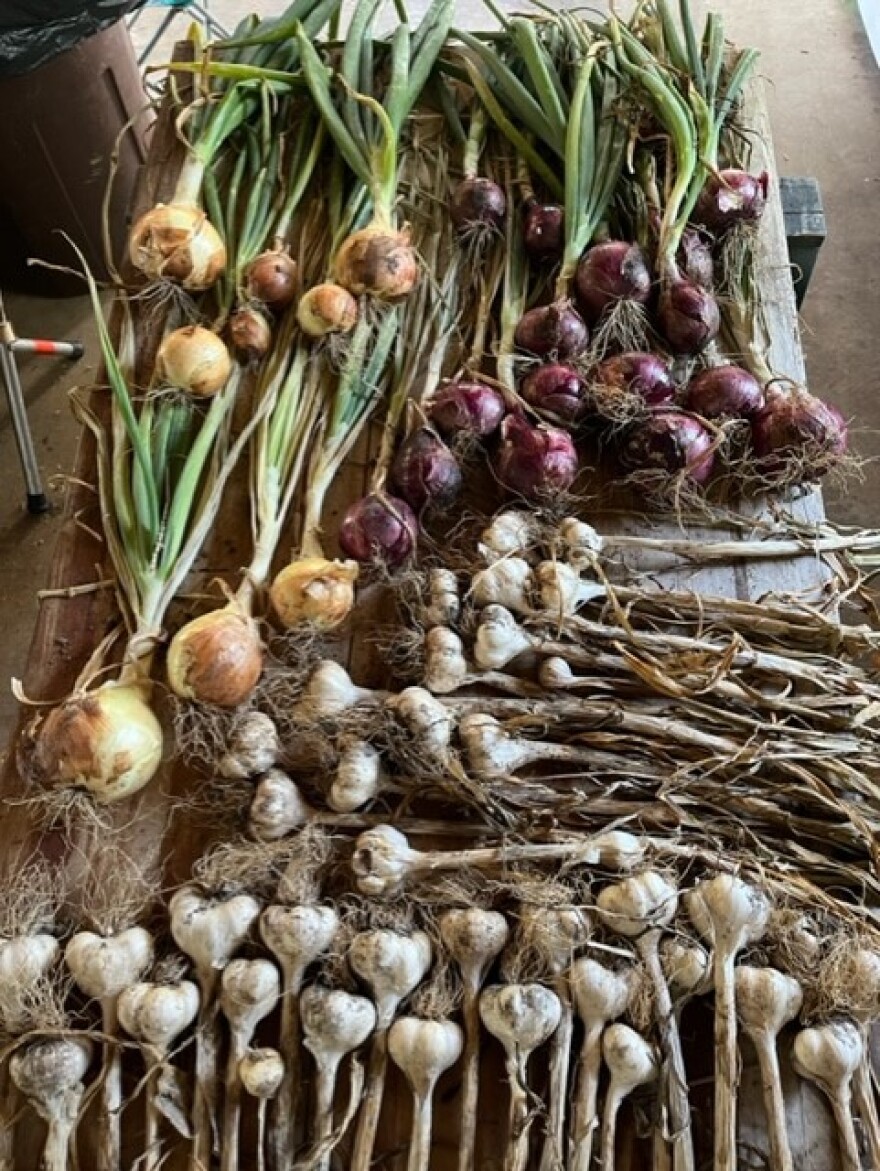Ah, the Dog Days of Summer are here as July unfolds in all its glory. The mint is being clipped regularly for slightly sweetened mint iced tea and other cooling beverages to elicit the fond memories of a cool spring breeze. With so many flowers blooming, the pollinators are having a field day venturing from blossom to blossom, spreading pollen as they seek the sweet nectar within a flower.
Keeping the plants healthy and blooming requires regular watering during the summer. As water is applied to containers, hanging baskets, and the ground, nitrogen is leached away. Nitrogen is unstable and free, meaning it is not chemically bound within the soil like phosphorus, nor has limited mobility in the soil like potassium. Nitrogen is a vital element for photosynthesis, so a plant low on nitrogen will translocate the nitrogen to the new growth causing the older leaves to yellow. To avoid this scenario, apply fertilizer to plants that are watered regularly to replace the nitrogen leached out by the frequent watering. Never apply a fertilizer to dry soil — always water first, wait for the plant to absorb the water, then apply the product per the instructions on the label.
Recently, I cut from the garden the now powdery mildew-coated snow peas that were past their prime. I cut the plants at the soil line with the intent of leaving the roots in the garden to reduce disturbance of the soil and hence the microbials within, increase the organic matter of the soil, and create tunnels for earthworms and arthropods.
As I removed the vines, the bush cucumber growing under the pea support arch was exposed and can now flourish in the full sun. I sowed the seeds weeks ago in preparation for this seasonal change over of garden space use. Another area recently “flipped” was this spring’s lettuce bed. After cutting back the bolted plants, I sowed bush bean seeds, watered, and covered the area with straw to retain soil moisture, and hasten germination as well as suppress weeds.
The other day I noticed the onion and garlic greens had fallen over, signaling time for harvesting these root crops. After carefully removing the bulbs with the fallen greens from the soil, I laid them out on a table in my garage to cure. After a few weeks, the skins of each will become papery, and I will then braid the onions for hanging and roast the garlic for storage in olive oil.

Unfortunately, the garlic bulbs I grew will not keep well post-harvest because they were infected with Potyvirus. This is a group of viruses that affect all Alliums but make garlic more susceptible to weather extremes and affect their ability to keep well after harvesting. The virus is transmitted through planting stock or by aphids. The virus reveals itself through the yellow mottling or striping of leaves, particularly young leaves, stunted plants, or a reduced bulb size. The potyvirus is a group of viruses that include Yellow Dwarf Virus, Leek Yellow Stripe Virus, Garlic mosaic, and others. Since these plants are in the Allium family the viruses are non-selective and can infect any plant within that family. I had the pleasure of experiencing this virus complex through the symptoms of streaking and striping on the leaves of the plants. The virus arrived with the bulbs, and I have made a note to seek out bulbs that are “clean,” free of the virus complex, in the future.
Root crops are easy to harvest, and carrots are no exception. I enjoy tender young carrots in my salads as well as mature carrots for roasting in fresh herbs with olive oil, or sauteed in a little brown sugar and water to bring out this vegetable’s sweetness. Judge the size to harvest by brushing back the soil at the base of the greens to reveal the width of this root crop.
Like many gardeners there are times when other obligations keep us out of the garden and the weeds move in. Recently, that happened in my life and the violets went to town! While I was removing the lush green clusters of growth, I discovered a phenomena violets exhibit that is quite unique — an underground bud! After the showy spring display, violets develop a second wave of inconspicuous flowers that are just buds, no petals. The unopened buds are actually petal-less flowers that grow underground or in the leaf litter, completely out of sight. They self-pollinate, creating a healthy mass of seeds within the fruiting capsule. The mature seed cases, called capsules, migrate to the soil surface where they disperse the seeds, ensuring the perpetuation of the violet species adapted to that local environment. Pretty cool! During the summer look for the petal-less underground flowers and enjoy a long-term survival mechanism of the “delicate” violet.
Happy Gardening!
- Peggy Singlemann













